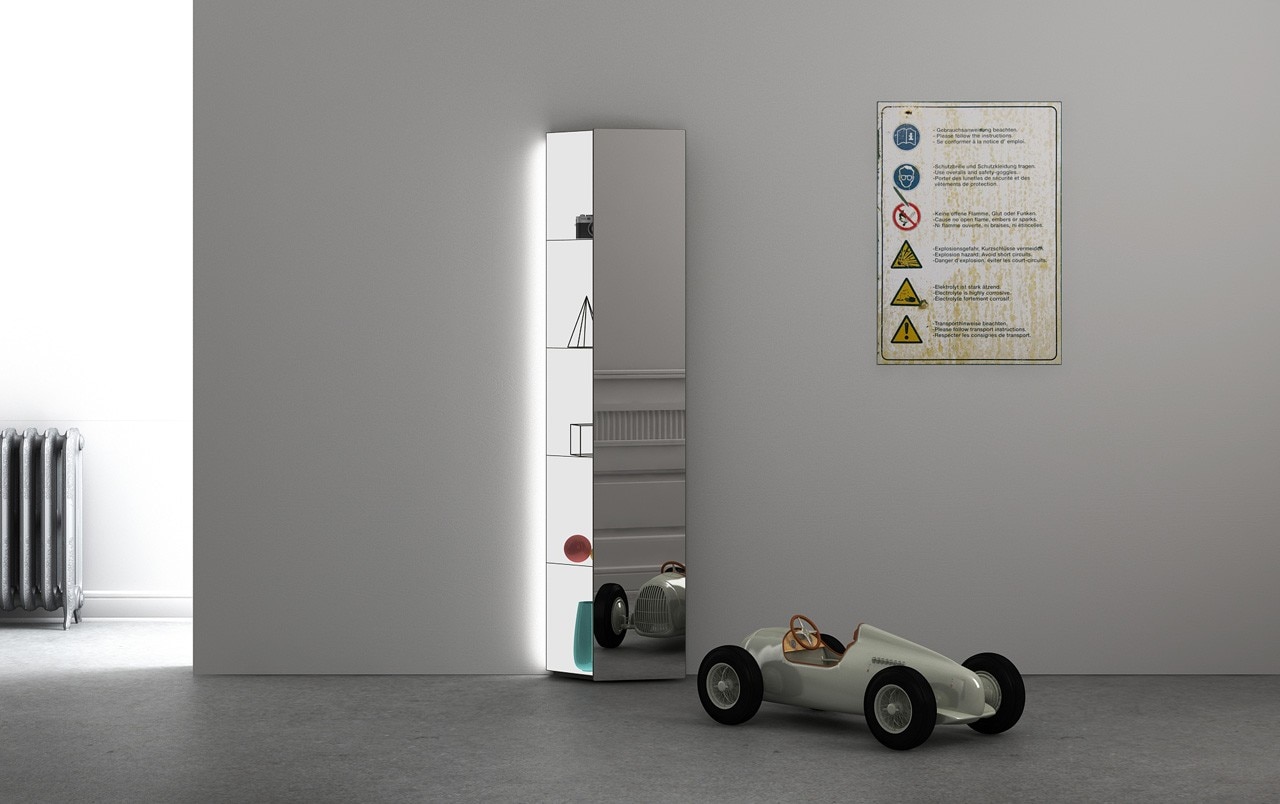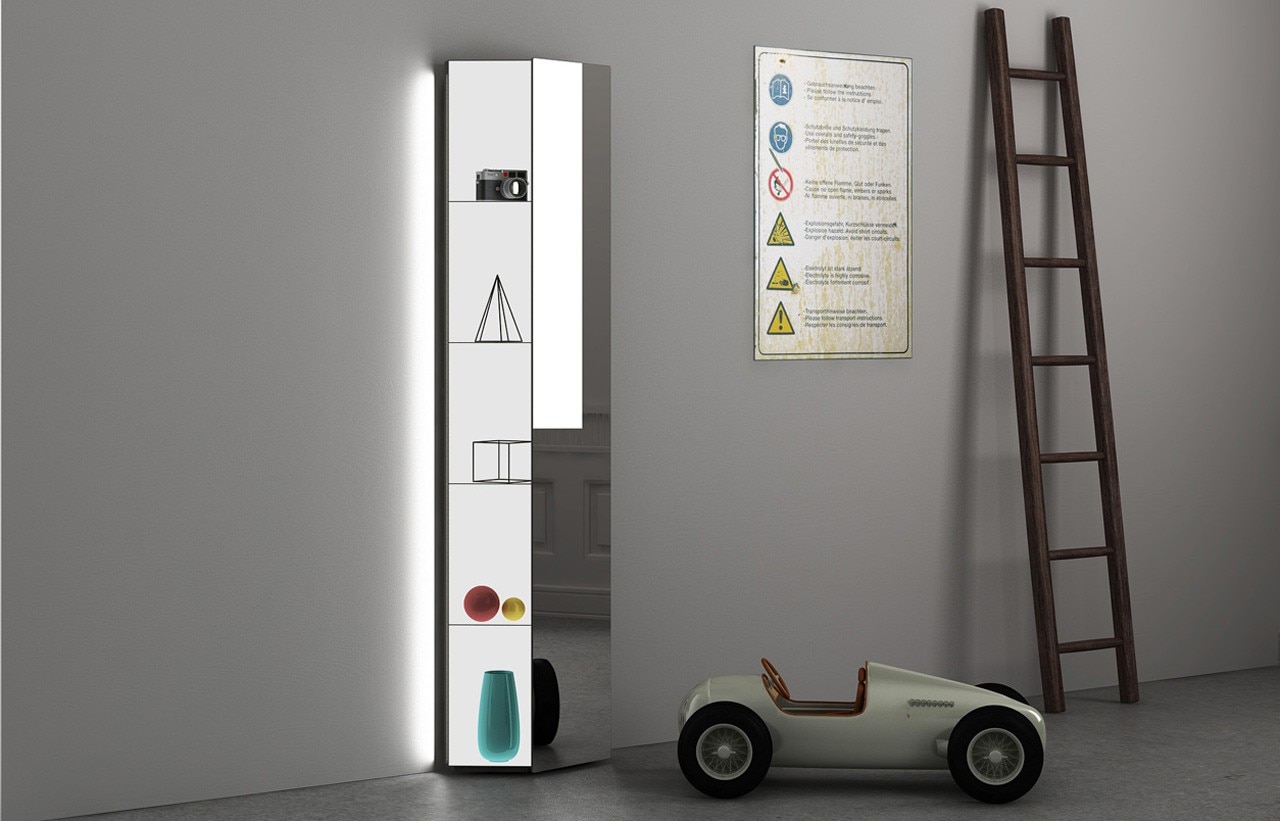
Domus: How did you respond to the Natevo invitation to design a hybrid lamp/piece of furniture?
Roberto Paoli: Although not really a fan of multifunctional objects in themselves, I totally agreed with Natevo’s decision because I see it as a desire to link this characteristic to a basic simplification of our relationship with space. For my part, this also means the idea of regaining space. This is what I wanted to achieve with Bopeep, a piece of furniture primarily designed for the entrance hall of the home and which combines three objects: a mirror you can use before you go out; a console table on which to leave things you don’t need once home (in this case, concealed behind the mirror-curtain) and that are not particularly ‘attractive’ but have to be found quickly on the way out; and, lastly, a light. Three objects gathered in a compact piece of furniture that has no aesthetic aspirations but frees up space from the so-called ‘mechanical’ functions of everyday life to allocate it to others that are more emotionally worthy.
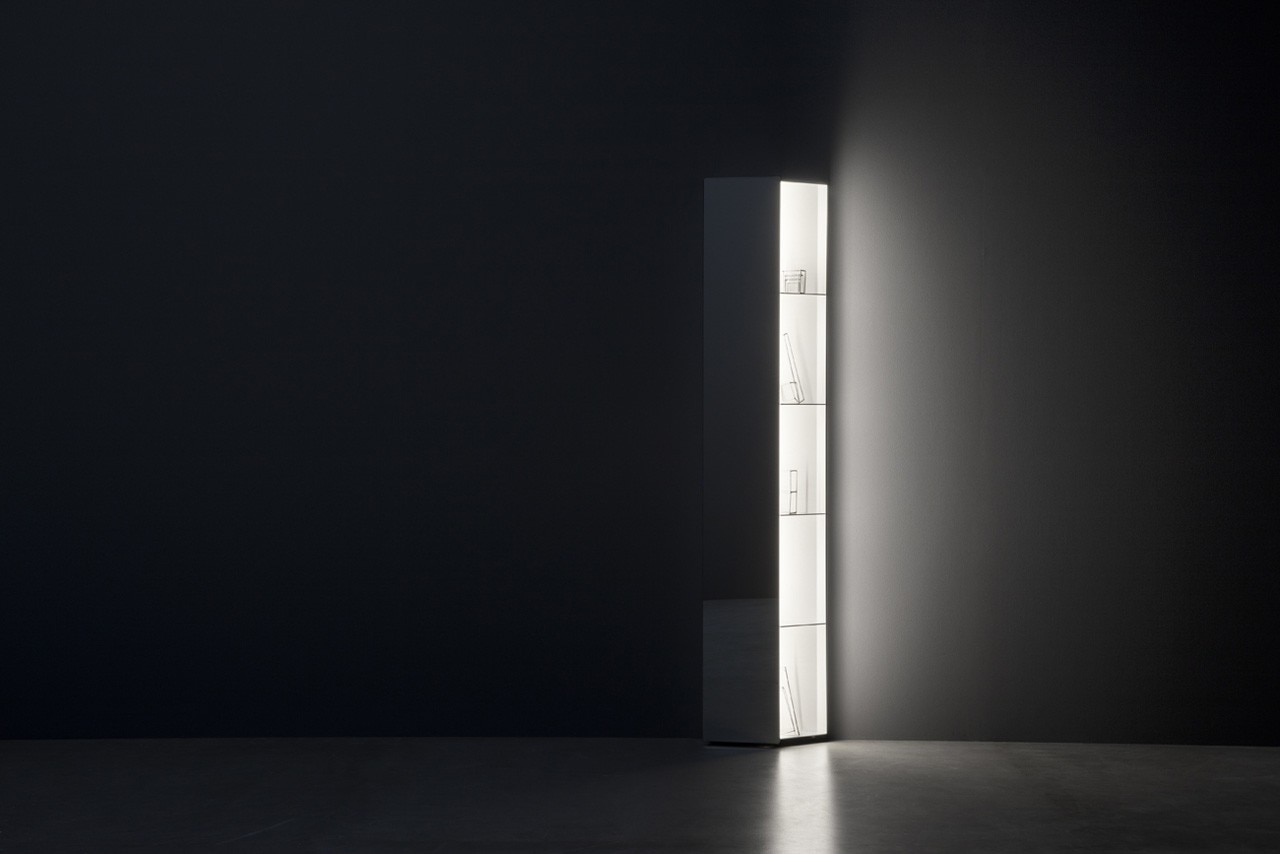
D.: This is not the only thing you share with Natevo. You have launched a website that works in much the same way as they do, adopting a ‘promise to purchase’ pledge to promote the production of the objects presented.
R.P.: It, too, was inspired by Kickstarter. I am passionate about this approach so we found ourselves in total harmony. With regard to this formula, what Natevo proposes is extremely intelligent because it crosses both the virtual and physical dimensions, partly because you must consider market behaviour, which cannot suddenly be ignored, especially in the world of furnishing, which is hard to choose exclusively via the Internet without that reassuring moment when you can actually touch what you are about to buy. We are talking about bulky pieces that will accompany us in our home for a long time and perhaps the rest of our life.
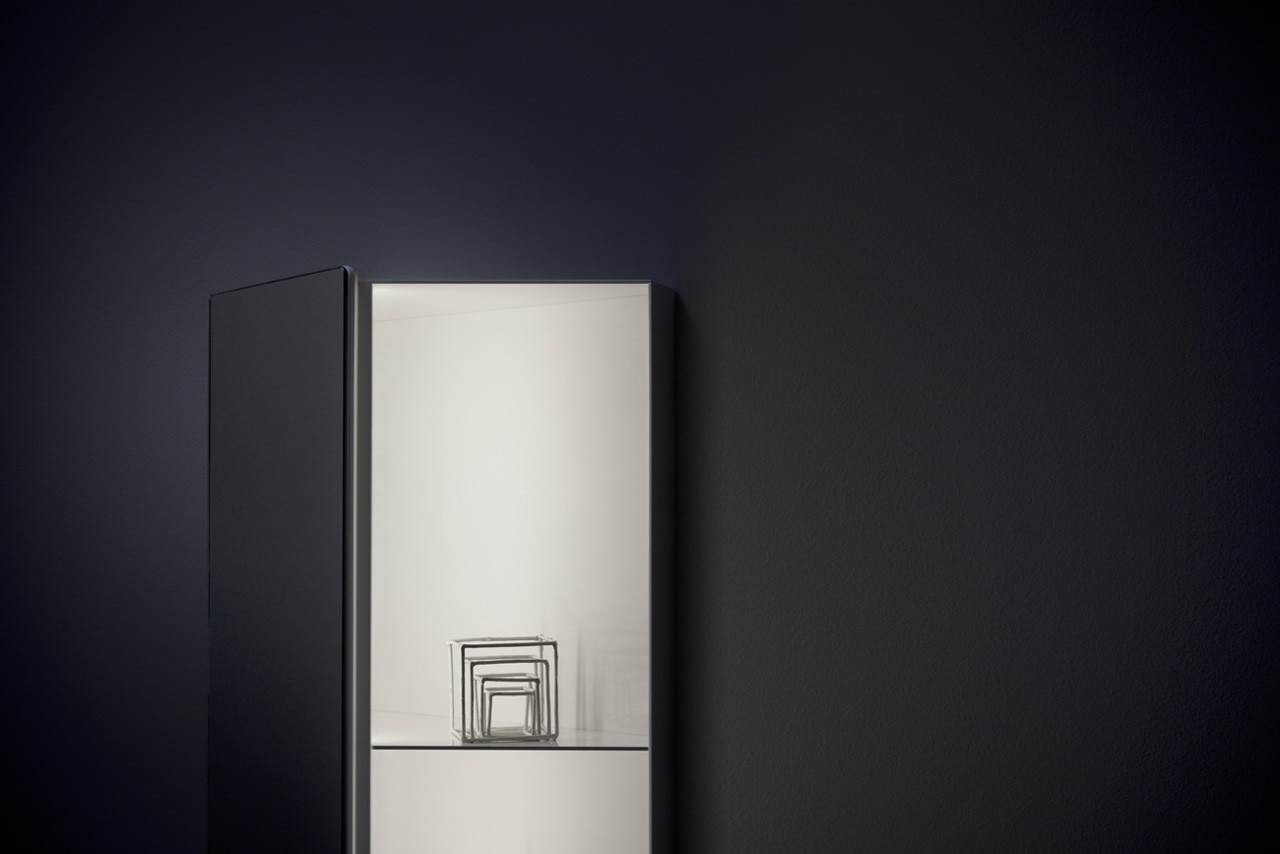
D.: The Natevo project also offers a precious opportunity because it allows anyone to freely submit an idea, or rather a design, to a large company without the need for some form of previously consolidated contact.
R.P.: It is a great opening, especially in these difficult market times. It breaks away from conventional relationships to experiment new forms of dialogue between designers, companies and consumers. It will be fascinating to observe the developments.
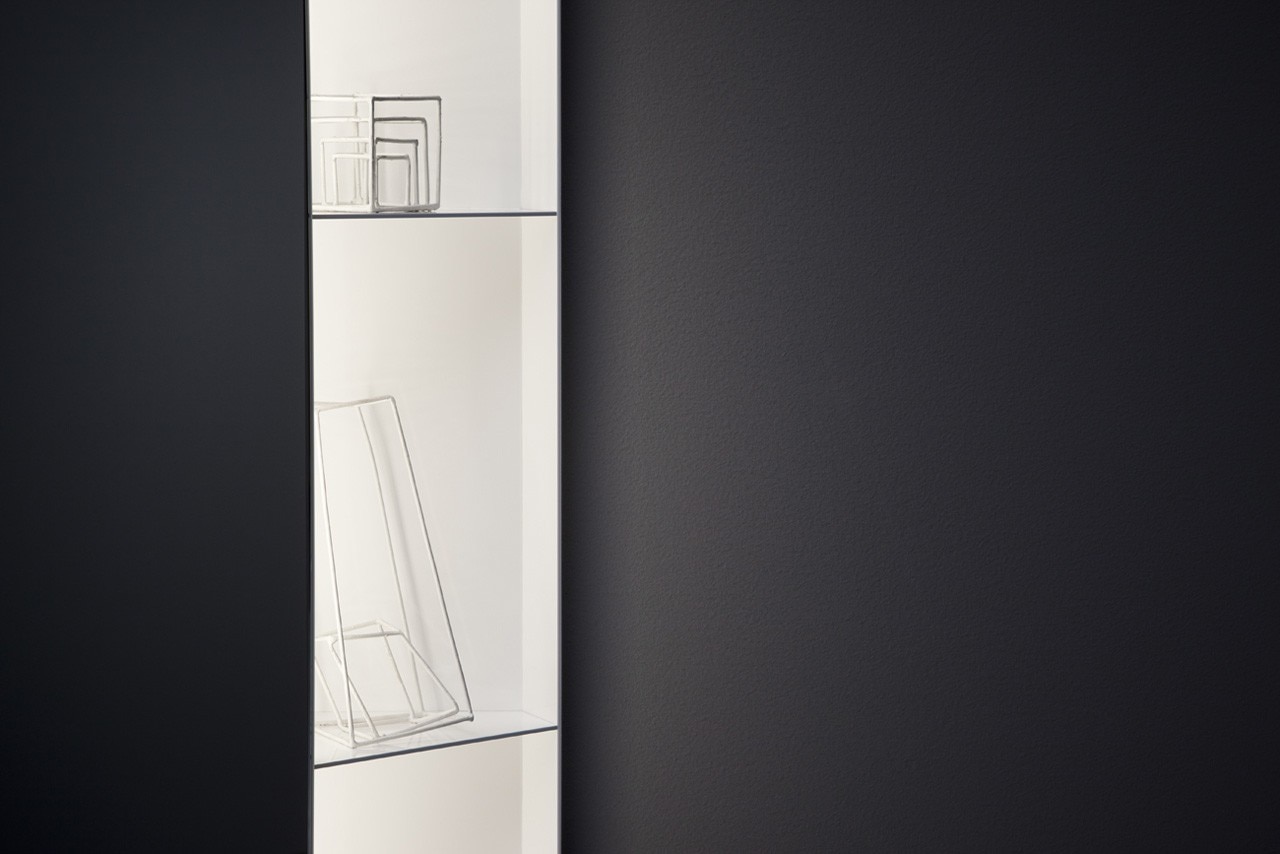
D: Bopeep is the first project to have come through the whole competition process. What was your personal relationship with Natevo and the Flou research centre like? How did the design develop? Were any changes made to the original design?
R.P.: We sent in several designs, one was selected and we were called in after the first prototype had been made. From then on, the collaboration was only positive, sometimes with substantial changes to the prototype. For example, we had planned greater thicknesses using phenolic sheeting or painted MDF but, in the end, we chose sheet metal for finer thicknesses and a more refined perceptive result, and improved costs. So, we changed the material and then experimented with the option of adding a light or mirrored sheet and so on to the final prototype. It all went very smoothly but then Flou is a good firm and, most importantly, you can count on its excellent workforce, renowned people, you could say, who can look at a design and immediately tell you the best way to produce it, or who phone you ten days later to show you a prototype that resolves aspects you hadn’t even thought about. They are the true heritage of the Italian design culture.
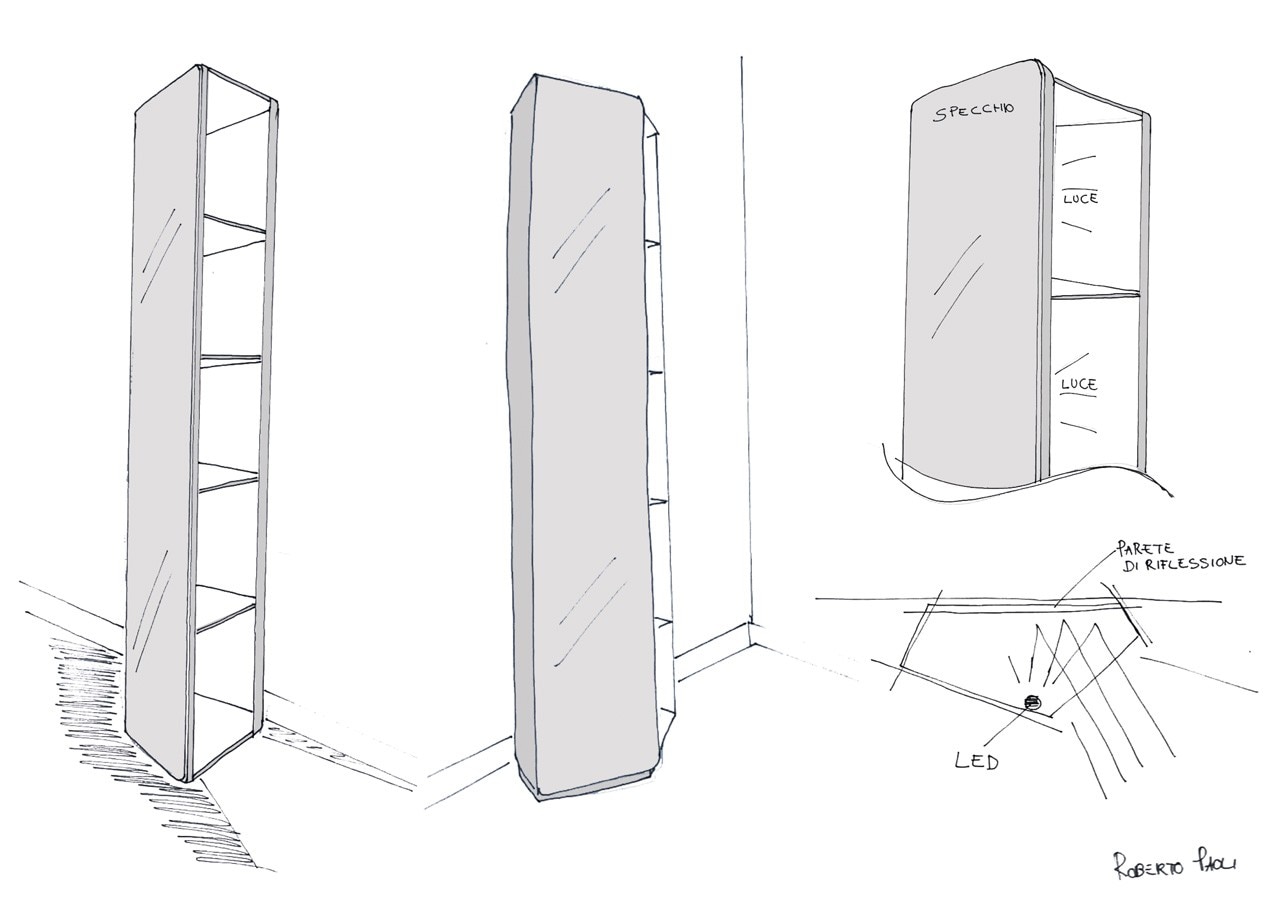
D.: Natevo also represents a guarantee of quality, you could say, offered by a solid and ‘traditional’ nucleus compared with an expanded process in which everyone, via the Internet, can potentially play a crucial role, both at the beginning as creatives and at the end as the effective promoters of an object’s production. It is a circular route and extremely open to the final users, which is one of the most innovative aspects of this initiative.
R.P.: Indeed and it is because of this openness that the test is not over for Bopeep. Now it has to be sponsored by the Internet public before its life cycle can really start. Let’s hope they like it.
D.: By the way, why the name Bopeep?
R.P.: We wanted a name that would stress the concept of placing objects in a slightly concealed place but also one that is tongue-in-cheek. Bopeep is what English children call the game of hide and seek, and also the game in which a child hides behind something and suddenly pops out and goes 'boo!', which in Italy is perhaps called cucù.

